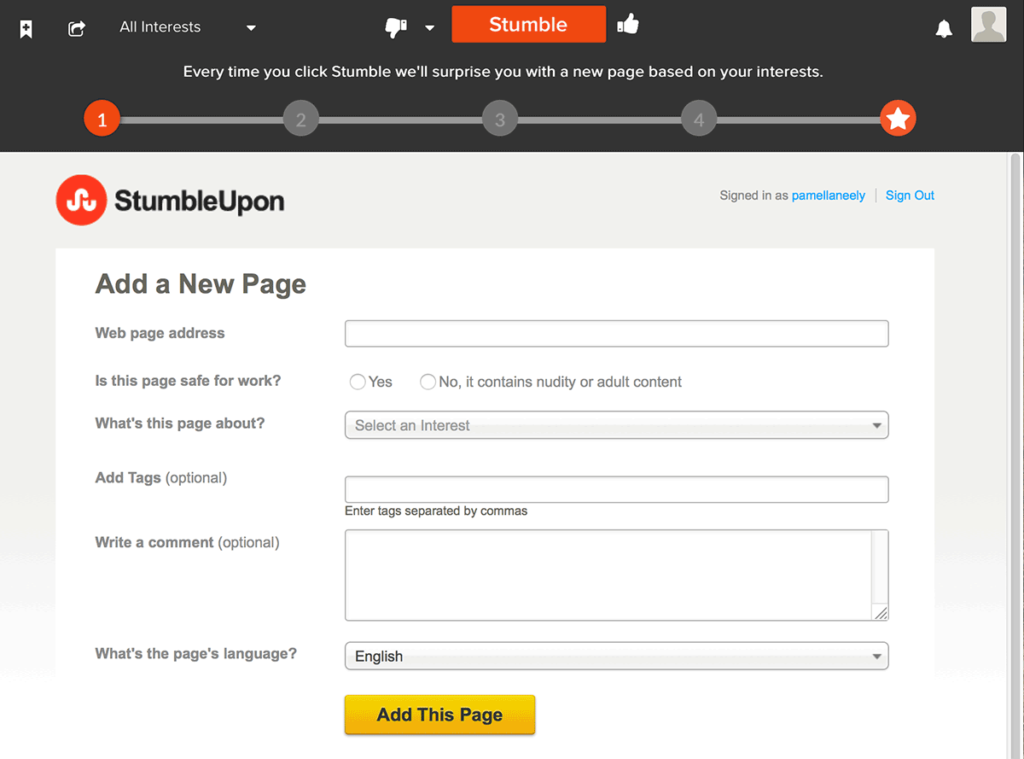Traffic is to digital marketing like gasoline is to an engine. It’s what makes it go. So it’s not too surprising that web traffic usually comes in at the top of the list for content marketing goals.
Trouble is, traffic can be hard to get. It’s not uncommon to invest months of work in content marketing before you see any significant traffic. If you want to shorten that time frame, take a look at these traffic-building tactics. You’ll probably find at least a couple you could implement without too much extra work.
Get the search engine optimization right
1) Optimize for long tail keywords.
Long tail keywords are search terms of three words or more. These specialized keywords are easier to rank for because they have less competition. But they often still have good search volumes, and they tend to convert better.
2) Get your technical SEO right.
Does your site have the basic nuts and bolts of search engine optimization in place? For instance, is your website fast and mobile-friendly? Are you using meta title and description tags correctly? These and other SEO basics can make a difference, and they aren’t that hard to fix. See our ebook, How to Make Any Content SEO-Friendly for more details.
Rework your content
3) Reformat your content into videos, infographics, SlideShares and more.
You work hard to finish every piece of content. So why not make the most of your efforts? Reformat that content into multiple sources of traffic.
Videos are often the best choice for reformatting. I know video production can seem intimidating, but once you’re used to the process of making short videos, they often take less time than blog posts. And remember: YouTube is the second largest search engine…
SlideShares are also a fantastic way to rework content. In a few hours you can remake a blog post or an ebook into a SlideShare. And SlideShares get traffic: Every time I reformat a post into a SlideShare I get about 20 new visitors to my site every day for a month, just from that one new piece of content.
Heidi Cohen has reformatted some of her blog posts into SlideShares
4) Republish your content.
You may want to do a light rewrite of your articles before you republish on these sites, but it’s worth the effort. LinkedIn, Medium, and Business 2 Community all get enormous amounts of traffic. So why not get your posts seen by more people?
I regularly hear from consultants and smaller companies that they get far more viewers for their posts on LinkedIn than they do when they publish on their own website.
Guerrilla idea: What if you republished some content as a Kindle book and included links to other content on your site in the Kindle book? All it would take is a light edit of an eBook, or you could reorganize a series of blog posts.
Promote your content
5) Announce your new content to your email list.
This is one of the easiest and most obvious ways to boost traffic. But it works every time, and it’s a legitimate traffic source.
6) Submit your content to StumbleUpon, Reddit, Digg, Technorati and elsewhere.
This takes very little time, and every once in a while it creates a significant traffic spike. There are many other sites to submit content to, but I’d stick with only top-tier choices. You don’t want to be adding links to a site Google might come to view as a bad neighborhood.

7) Find high quality, industry-related sharing sites.
Every industry has at least one or two sites like this. They are reputable, widely-known sites that let you mention new content. These are a little bit like a LinkedIn group that allows content promotion, except they’re not attached to LinkedIn.
If you’re in the content marketing biz, Inbound.org and Growth Hackers are good choices.
Of course, promote only content that’s worth promoting. Everything you publish should be top-notch and super-useful. Otherwise no amount of promotion may be enough to get people to read it and share it.
8) Try MyBlogU, Viral Content Buzz, and other private content sharing networks.
Tread carefully with these, but you can get additional traffic from them. If you come across a private sharing site you’re not sure of, stay on the safe side and don’t use it. There are plenty of content sharing and promotion tactics – there’s no need to dip into risky sharing sites.
9) Join or assemble “a wolf pack”.
I got this term from Natalie Lussier, who partnered with a very small group of marketers and consultants to create her own wolf pack. Everyone in the pack knew everyone else well. They trusted each other’s content, and how they ran their business, so they could recommend and promote each other’s work at will.
If you can find a few other marketers in complementary but not competitive businesses, and you can trust their work completely, a wolf pack can be a powerful traffic generator.
10) Reach out to influencers.
I’m sure you’ve heard of influencer marketing. Influencers are people who have a large online following. You reach out to them and ask them to share your content because it would be of interest to them. Or you mention their work in your content and hope they’ll be pleased enough to tell their followers about it.
This works best if you try “micro influencers” before you try to hook up with the giants of your industry. Check out Ninja Outreach if you’re interested in this technique. It’s an influencer finding tool that’s supposed to work very well.

11) Advertise… frugally.
There’s a secret in content marketing. It’s that some people pay for it. “It” being traffic, of course. And while you could dive into Google AdWords or even LinkedIn ads to promote your content, services like Taboola and Outbrain may end up being more effective.
12) Don’t gate your content.
I know this seems questionable – for many B2B marketers, the whole point of content is to get leads. Getting leads means asking for at least an email address before someone can see your premium content. But gating content drastically reduces how much exposure it gets. According to David Meerman Scott, “between 20 times and 50 times more people download free content.”
But, of course, you’ll lose the leads if you skip the gating. So compromise: Gate most of your content, but leave a few pieces free as traffic and link magnets. Want a good example of this? A page of on-demand webinars available without having to fill out any forms.
Leverage social media
13) Share your content on social media.
I’m pretty sure you all knew about this. But it is a way to get traffic to your site. One tip: Share each piece of content more than once! And not just within the first week that you published it. There’s no reason you can’t retweet or repost the same article once a month until it’s out of date.
14) Add Sniply or another overlay widget to your social media posts.
This is a new technology more people should use. Sniply (or Openr or similar tools) adds an overlay in the footer of the screen whenever someone clicks on a link you’ve shared in social media. So if someone clicked one of the links you had shared on social media, it might look like this:
The overlays let you promote content, build an email list, or just send people to your website. It’s a slick way to get far more mileage out of what you’re sharing.
Do some careful link building
15) Guest blog.
Guest blogging can definitely drive traffic. And while the days of guest blogging solely as a link-building tactic are over, if you write high-quality posts for high-quality sites, you can still attract high-quality traffic. To make it worth your time, aim for the highest-traffic, highest-quality sites that will accept your posts.
16) Leave comments on major blogs and websites.
Blog commenting is an underrated way to get traffic, but it works. As with any link-building technique, don’t abuse it and don’t use it on second-rate sites.
Blog commenting won’t ever get you a tidal wave of traffic, but it can generate a steady trickle. Blog comments are also a great way to demonstrate your expertise and to build relationships with bloggers and site editors. It’s a great way to get your foot in the door for guest posting.
17) Build a presence on a major platform.
Most of us would probably groan at the idea of starting another blog, but that’s what this tip suggests. The good news is you don’t necessarily have to be a writer for this to work.
If you’ve got a good voice and some skill as an interviewer, start a podcast. Love being in front of a camera? Launch a YouTube channel. Or get yourself a spot as a guest contributor on the likes of Forbes, Inc, Entrepreneur or similar sites. Many CEOs are using those types of guest columns to get major exposure for their companies.
Back to you
There are almost endless ways to boost traffic to your site. The seventeen I’ve mentioned here are a start, but definitely not every technique. Do you have a favorite trick for attracting traffic? Tell us about it in the comments.



